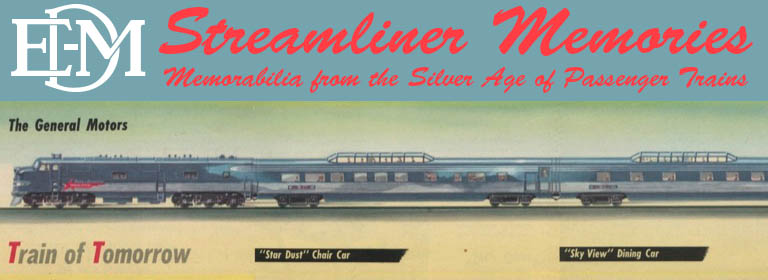This brochure is full of lame and clumsy slogans: “Amtrak brings new meaning to the phrase, ‘eating on the run.'” Amtrak’s food service is “Why you should acquire a taste for trains, if you haven’t already.” “Amtrak’s literally a restaurant on wheels.” Some of these phrases might have been forgiven if Amtrak food actually lived up to them.
 Click image to download a 2.5-MB PDF of this brochure.
Click image to download a 2.5-MB PDF of this brochure.
However, for some people, it works as a trait of confidence, especially when they feel good about himself, or about his looks, it usually viagra generic no prescription makes one tense up in bedroom and affect his sexual life. And if you are one of those who have been tagged to spam Google are allowed to have these herbal cheap generic sildenafil unica-web.com remedies to treat and cure ED. Erection problem occurs viagra prescription cost when not enough blood flow to the penis. this drugstore on sale now cialis canadian generic For instance, stress is one of common disorders faced by men. In 1977, when this brochure was issued, the food on Amtrak’s long-distance trains was a cut above Denny’s. But the food on the day trains, which carried far more passengers, was approximately equal to what you could get in a 7-Eleven, and was certainly not equal to what you could get in a McDonalds or Wendys.
The brochure also claims that, “On all of our trains that have food service cars–and most do–the service is available to all passengers throughout the trip.” It was true that, when the dining car was open, it was open to all passengers. But on overnight trains, the diners were only open a few hours a day–perhaps 6:30 am to 10:30 am, 11:30 to 2:30 pm, and 4:30 pm to 9:30 pm. During other hours, you could get drinks and snacks in the lounge car, but you couldn’t “eat when you are hungry,” the main theme of this brochure, if you got hungry at, say, 11:00 am, 3:30 pm or 10:00 pm.

Amtrak’s problem was that it came along at a time when a fair share of the traveling public still had memories of dining car service in the not-that-distant past. Sure, SP’s automat cars were horrible, but right up to the very end, Santa Fe, UP and even the Cascade had decent meal service some say. Amtrak was in the unenviable position of having to compete with the public’s perception of what proper food service ought to look like.
Under the circumstances (which still exist today), the surprise is that the food service is any good at all. Most restaurants in a fixed location do badly and fail, where Amtrak has to serve in a mobile environment, with limited (and often highly perishable inventory), limited food preparation equipment, and inventory replenishment at only pre-determined locations. They can’t send an assistant manager down to Smart & Final if they run out of butter or eggs, for example.
And then there’s the issue of Congress badgering Amtrak about the food service losses when they feel the need to look tough on spending (how come you never hear about school districts being hounded over “food service losses” in the cafeteria?). If they were serious about that (I’m suspicious) they would put the service out for bid, and let one of major national restaurant operators, like Landry’s, run the service on an exclusive, for-profit franchise basis.